Child Centered Design - The Process Behind Our Products
This study began in the fall of 1999 with a group of Kindergarteners. I taught the alphabet using stories and illustrations to link symbol and sound. I taught reading using a systematic, explicit phonics approach based on Orton Gillingham and fully compatible with Science of Reading guidelines.
The children thrived. They had no trouble learning how to spell the sounds they heard in words. However, they became caught in a never-ending sounding-out loop. To them, reading was sounding out words, because that was the skill I had taught. Most did not recognize whole words nor remember words they had just decoded minutes before. To me, they were not readers at all. They were master decoders!
In November 1999, I started the experiment with adding right-brain elements to phonics concepts and words, and suddenly the students were really reading! By March, because of the very comprehensive phonics base they had previously acquired, they tested well above grade level. What made reading accessible to all the students was adding right-brained elements to the explicit phonics system. The approach was transformed from being a purely left-brained discipline to being a whole-brain approach that reached the visual/spatial students within the 63%.
The design of Child1st teaching resources is strongly rooted in the Child. We believe in looking at the Child first (1st) when designing materials to use in teaching them. What follows below is a faithful representation of the process I went through as I designed our resources. It was a meticulous and painstaking process that yielded amazing results. Please also refer to our page “Formal Research” for several studies with student groups.
Child-Centered Design
My experiment involved studying why children struggle and fail and identifying the elements that make learning easy for them. My goal was to be prepared to create teaching resources that successfully reach children across the learning spectrum. My approach is whole-brain and includes the right-brain elements missing from traditional Systems.
The structure of the experiment included these elements: problem, research, theory, plan, design, and test.
PROBLEM
In 1990 I began to focus on the problem of bright students failing to learn and how to bridge the gap between learning theory and teaching practice. Graduate school provided the opportunity to study formal research and search for answers that would illuminate my students’ roadblocks to learning.
RESEARCH
In addition to reading formal research, I observed my students closely as I taught them, to pinpoint what was hard for them, what those hard concepts had in common, and to learn what was easy for them. Child studies conducted in conjunction with graduate courses revealed much about how my children took in and processed new information. Both weaknesses and learning strengths were observed and recorded in minute detail.
THEORY
I began to link obstacles to specific teaching strategies that did not work for all my students when I presented new, abstract content. I also began to identify specific approaches that seemed to work for all my students regardless of their learning preference. In addition, I habitually asked each student what helped them remember a concept. Difficulties included abstract symbols, unrelated details, sequential procedures, and drilling as a means of learning. Helps included images, related body movement, patterns, stories, and other links between content and meaning.
PLAN
My idea was to embed abstract concepts (left-brain elements such as letters and words) in images that conveyed visually the shape and sound of letters and the whole word and its meaning. In order to target kinesthetic gifts, my plan was to include a body motion that mimicked the meaning of the letter or word. Finally, each concept would include a story for context, meaning, and hooks for recall.
DESIGN
I designed prototypes that included images, body movement, and story. Other elements of design included showing the global whole so students could detect patterns, moving from whole to part in teaching approach, showing the relationship between seemingly disparate elements in learning. That year I designed prototypes for reading and math using the same design plan for each.
TEST
I tested the effectiveness of each prototype with my students. From their feedback I made revisions. In conjunction with my course work and under supervision of my professors, in the spring I tested my students extensively to determine how effectively these prototypes worked in making the students successful in learning. Over time design elements have been refined and streamlined.

TESTS: Phonics Mastery Inventory, Blends & Digraphs, Number of Syllables, Base Words & Affixes, Plurals, Vowel Teams, Two Consonant Endings Features Spelling. John's Basic Reading Inventory: Graded Word Lists - Form A and Oral Reading Passages - Form A
OBSERVATIONS: Mechanics of Writing, Work Habits
OUTCOMES: When testing kindergarteners in reading, grade levels ranged from 2nd grade to 4th grade. In math, all students completed addition and subtraction computation including place value (addition and subtraction of numbers over 10).
